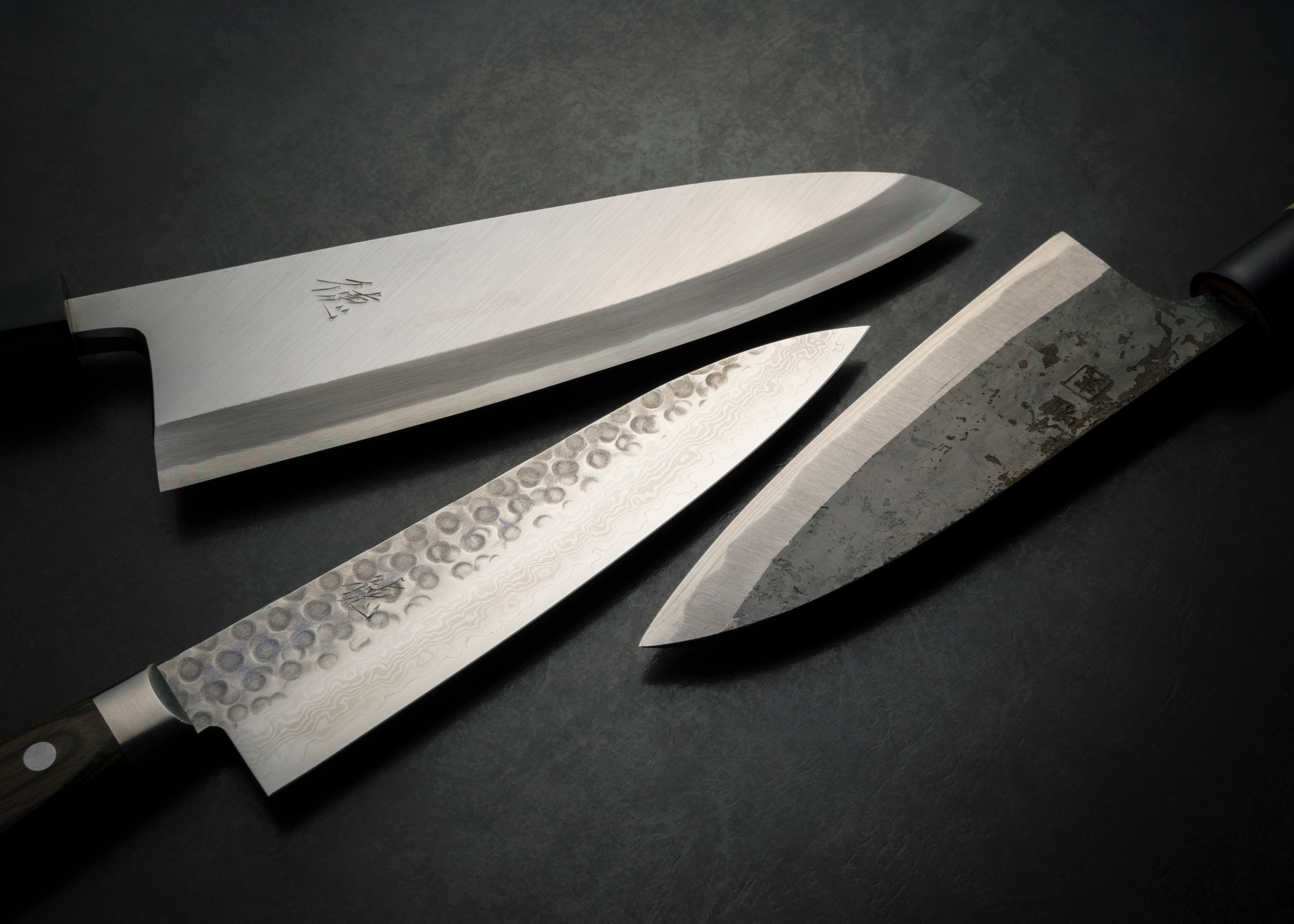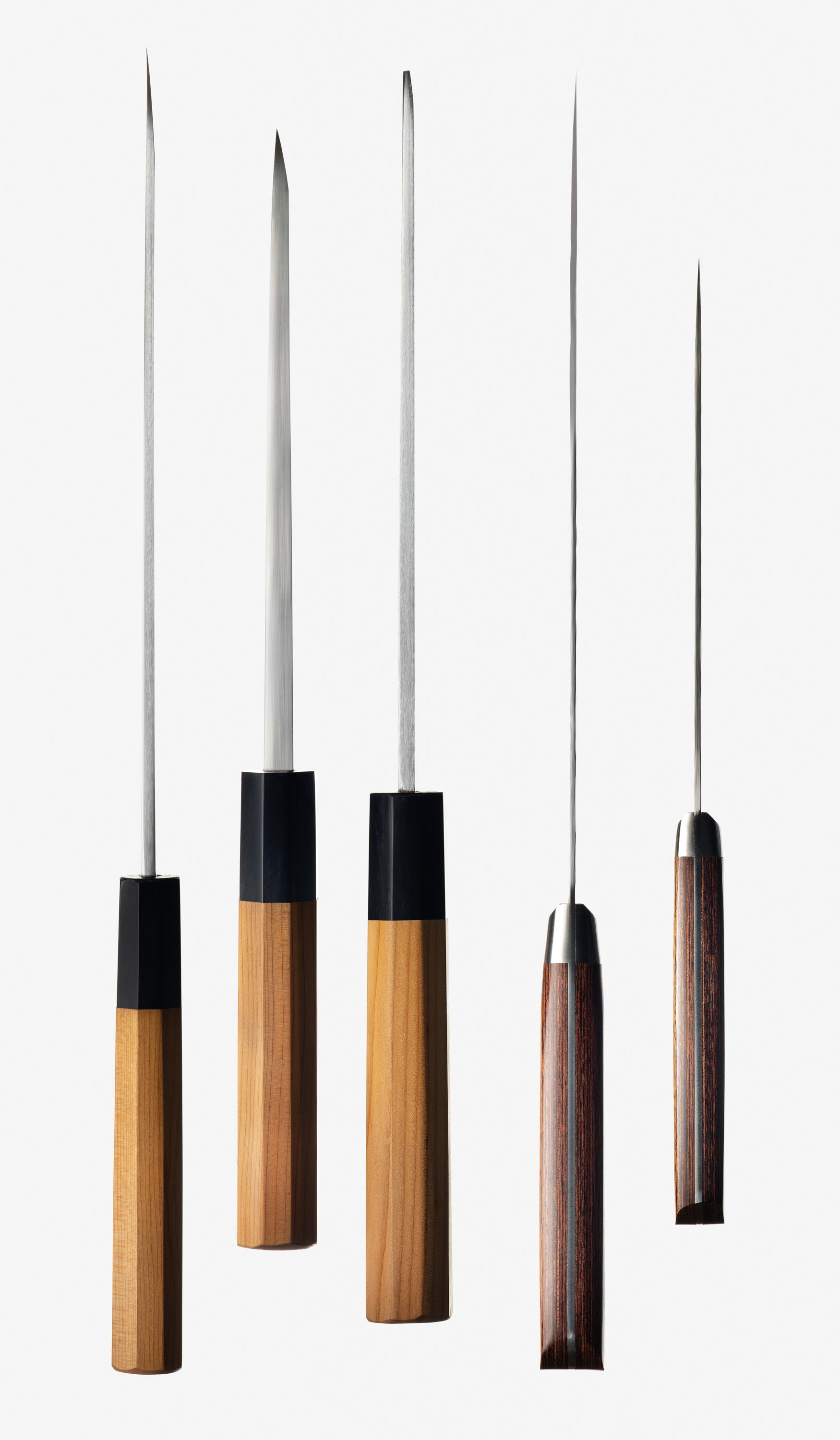
[2025] Knife sharpening course to help you sharpen your own knives
I am Okudaira, the owner of "Japanese Kitchen Knife TOKU''.
We want to sell knives made in our hometown of Sakai, Osaka, so we purchase and sell knives made in Sakai from a knife manufacturer in Sakai.
We don't just sell knives, we visit a number of blacksmiths and bladesmiths in Sakai to help our customers understand knives, experience the actual work, and hear from the craftsmen. I'm here. In addition to Sakai, we also visit Seki in Gifu, Tsubame-Sanjo in Niigata, Tanegashima in Kagoshima and Katsushika in Tokyo, in an effort to deepen our understanding of the characteristics and commitment of each.
Knife sharpening course to help you sharpen your own knives
■I want to sharpen my own knives!
Have you ever wanted to sharpen a knife?
If you can sharpen a dull knife yourself, you can quickly restore its sharpness when you notice that it has become dull, and you can make it just the way you like it.
Some people may have a simple sharpener, but the sharpness of the knife quickly fades when sharpened with the sharpener, so they end up not using it much.
■ Sharpening knives is not difficult
Many people think that sharpening knives is difficult. In reality, it is not that difficult if you practice a little and get used to it. Especially if you are sharpening a knife for home use, it is easy to sharpen once you remember the angle of the blade.
At Sakaitoku Knives, we hold knife sharpening classes, and even those who have never sharpened a knife before can go home having resharpened two knives by the end of the two-hour class. Yes, anyone can now sharpen a knife!
■ Reasons why sharpening knives is difficult
There are two reasons why sharpening knives is difficult.
One is the angle of the knife when sharpening it, and the other is the movement of your hand.
For double-edged knives such as Santoku knives, sharpen the knife at an angle of 15 degrees on both sides. For single-edged knives, sharpen at 30 degrees. People often say "the angle of two 10 -yen coins," but sometimes you don't have a 10- yen coin to hand when sharpening, right? That's why in the workshop, we explain, "Hold the knife at 90 degrees to the whetstone, then halfway to 45 degrees, then halfway to 22.5 degrees, and then sharpen it a little lower than that." That way, you can understand the sharpening angle even without a 10- yen coin.
Another hand movement is caused by the angle of the knife being shaken when moving it over the whetstone, as you turn your wrist when moving it forward. This happens because you feel that you have to use the whole whetstone. In such cases, try to move the knife in small increments rather than sliding it widely to eliminate the shake.
■ Surprisingly unknown ways to fix whetstones
When teaching knife sharpening classes, there are some things that even experienced knife sharpeners don't know.
This is the process of correcting the grindstone, known as "straightening the surface."
The more you use a whetstone, the more it wears down and becomes dented. If you sharpen a knife with a dented whetstone, you will not be able to get a clean edge. Therefore, you need to correct and straighten the whetstone after sharpening the knife, or even before sharpening. Doing this will allow you to get a clean edge.
■ For those who have trouble with the angle
If you have tried to sharpen knives several times but have difficulty getting the angle right, we recommend using a knife sharpening clip.
By setting the sharpening clip on the back of the knife, it will tell you the angle at which to sharpen. For those who have trouble maintaining the angle, sharpening with this clip attached will make it easier to maintain the angle and make sharpening easier.
■If you are unsure about your sharpening skills, try using the sharpening booth!
If you have been taught how to sharpen knives, but have tried to do it yourself at home but are still unsure, or if you have tried to sharpen knives on your own through YouTube but still can't do it properly, we recommend that you try out the sharpening booth at Sakaitoku Knives Asakusa store.
Sakaitoku Knife Shop Asakusa store has a knife sharpening booth that is used for knife sharpening classes. When it is not being used for classes or events, you can enjoy sharpening your knives yourself for 2,000 yen per hour.
You are free to use any of the types of whetstones sold in the store, so this is recommended for those who want to use a whetstone that they don't have at home, or who want to buy a new whetstone but would like to try it out beforehand.
For sharpening booth availability and reservations, please click here↓
Sharpening booth availability confirmation and reservation
Sharpening knives is not difficult, so why not give it a try?
Let's go to a knife store!
Sakaitoku Knife Shop opened a store in Asakusa, Tokyo on April 5th. The store is located on the 6th floor of a building right outside the north exit of Tobu Asakusa Station. It is also about a 3- minute walk from Asakusa Station on the Tokyo Metro Ginza Line.
We also hold sharpening classes and sharpening experiences, so please feel free to stop by if you are in the area.
Access to Sakaitoku Asakusa Knife Store
Sakaitoku Knife Shop also has channels on YouTube , Facebook and Instagram .
If you are unsure which knife to choose, please consult Sakaitoku Knives. We also post tips on how to choose and sharpen knives on social media and YouTube .



Leave a comment
This site is protected by hCaptcha and the hCaptcha Privacy Policy and Terms of Service apply.